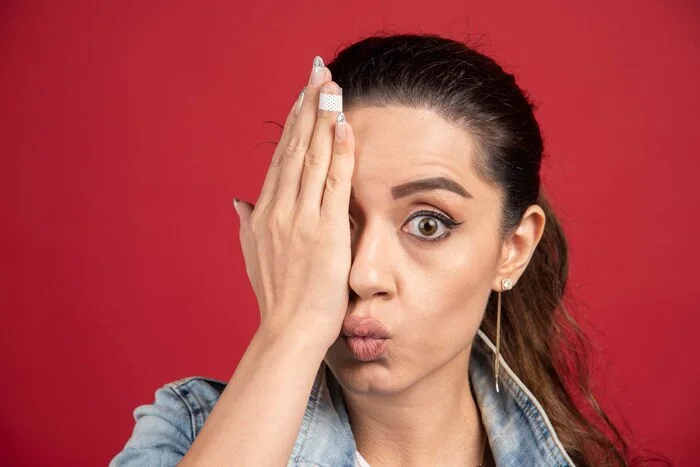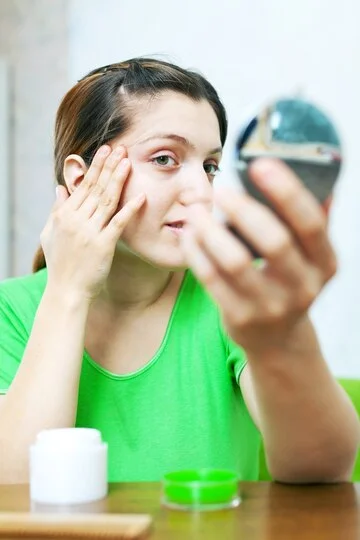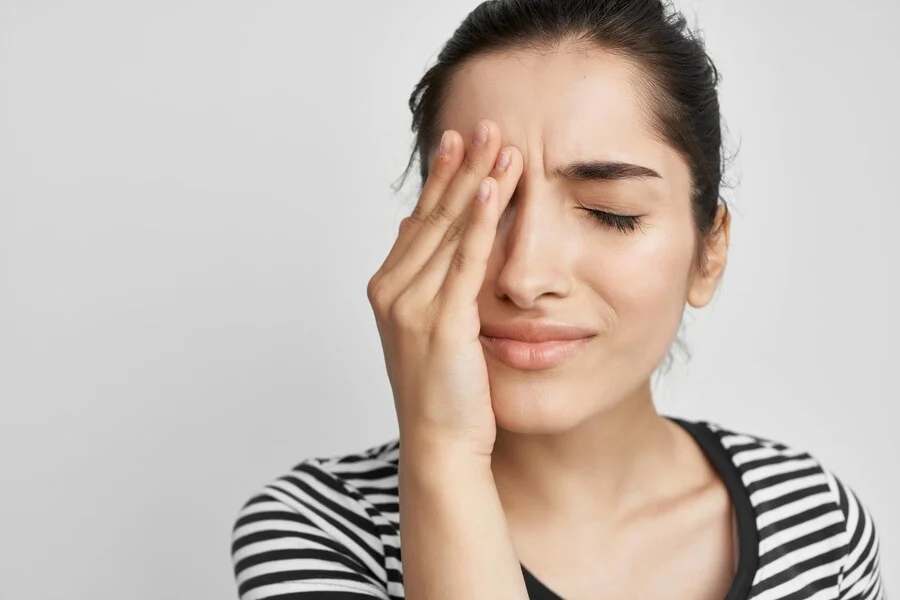We've all been there: that annoying flutter under your eye that you can't stop. Eyelid twitches, also known as eyelid spasms, are involuntary contractions of the muscles around your eye. They can be incredibly irritating, but luckily, they're usually harmless.
Causes of Eyelid Twitching
Understanding the root cause of your eyelid twitch is crucial for finding effective solutions. Here's a breakdown of the common culprits
The Fatigue Factor
Sleep
deprivation is a leading instigator of eyelid twitching. When you're fatigued, your
muscles, including those around your eyes, become overworked and more susceptible to
involuntary contractions. Think of it as your body's way of throwing a mini tantrum
for missed shut-eye.
Stress
Feeling overwhelmed, anxious, or stressed can
wreak havoc on your entire system, including your eyes. Stress hormones can disrupt
nerve signals to your eye muscles, leading to those pesky eyelid twitches.
Chemical Culprits
Caffeine and Alcohol: We all love
our morning cup of joe, but overdoing it on caffeine can dehydrate you and irritate
the nerves around your eyes, triggering twitches. Similarly, excessive alcohol
consumption disrupts your electrolytes and can worsen eyelid twitching. Moderation
is key!
Screen Strain
A Modern Menace: Our digital world comes
at a cost. Watching movies for excessive time glued to screens, whether on
computers, phones, or tablets, can cause eye strain. This fatigue can manifest as
eyelid twitching, reminding you to give your eyes a well-deserved break.
Dry Eyes
The Itchy Irritator: Dry eyes can be itchy
and uncomfortable when your eyes don't produce enough tears. This irritation can
sometimes trigger eyelid twitching as your body tries to compensate for the lack of
lubrication.
Underlying Medical Conditions
In rare cases, eyelid
twitching can be a symptom of an underlying medical condition, such as Bell's palsy,
Parkinson's disease, or a magnesium deficiency. If your twitching is severe or
persistent, consulting a doctor to rule out these possibilities is crucial.
Different Types of Eyelid Twitching
Not all eyelid twitches are created equal. Here's a breakdown of the two main types:
Myokymia
The Common Twitch: This is the most frequent
type of eyelid twitch, causing small, rapid, and usually painless flickering, typically
in the lower eyelid. Myokymia is generally harmless and resolves independently within a
few days or weeks.
Blepharospasm
The More Severe Twitch: This is a more
intense form of eyelid twitching that can cause forceful shutting of one or both eyelids
for several seconds or even minutes at a time. Blepharospasm can be chronic and
significantly impact your daily life and vision. If you experience this type of twitch,
seeking medical advice is essential.

When to actually Seek Medical Help: Don't Ignore the Signs
While most eyelid twitching is temporary and resolves independently, there are situations where seeking professional help is crucial. Here are some red flags to watch out for:
Severity and Persistence: If your eyelid twitching is severe, lasts longer than a few weeks, or significantly disrupts your vision, consult an eye care expert.
Pain, Swelling, and Redness: Eyelid twitching accompanied by pain, swelling, or redness in your eye could indicate an underlying infection or condition.
Double Trouble: Twitching affecting both eyelids simultaneously is less common and warrants a medical evaluation to rule out any underlying conditions.
Facial Involvement:If the twitching spreads to involve other facial muscles, it could be a sign of a neurological disorder. Seek medical advice promptly.

Finding Relief: Treatment Options for Eyelid Twitching
There's no magic bullet to cure eyelid twitching, but several strategies can help manage and reduce symptoms. Let's explore some effective approaches:
Prioritize Sleep: Getting enough quality sleep is the foundation for overall health, and your eyes are no exception. Aim for 7-8 hours of sleep each night to keep your eyelids happy and twitch-free.
Stress Management Techniques: Chronic stress can wreak havoc on your eyelids. Techniques like deep breathing exercises, meditation, or yoga can help reduce stress and potentially lessen eyelid twitching.
Limit Caffeine and Alcohol: As discussed earlier, moderation is key. Reducing your caffeine intake and avoiding excessive alcohol consumption can help prevent eyelid twitching.
While eyelid twitching can be annoying and disruptive, there are ways to cope and manage the symptoms. Here are some tips:
Reduce Eye Strain: Adjust screen brightness and text size on your devices. Ensure proper lighting while reading or working on a computer.
Eyelid Massage: Gently massaging your eyelids with your fingertips for a few minutes might help relax the muscles and provide temporary relief.
Manage Stress: Chronic stress can exacerbate eyelid twitching. Manage stress by practicing relaxation techniques such as yoga, meditation, or deep breathing exercises to reduce symptoms.
Stay Hydrated: Dehydration can contribute to dry eyes and potentially trigger eyelid twitching. Drink plenty of water throughout the day to stay hydrated.
If you feel discomfort regarding your eyes, you can visit Elite Eye Care, New York to get advice from optometrists.
Conclusion:
Eyelid Twitching - A Temporary
Irritation, Not a Cause for Panic
Eyelid twitching is a common and usually harmless occurrence. By understanding the causes, implementing lifestyle changes to promote healthy eyes managing stress, and seeking medical help when necessary, you can effectively manage this annoying but temporary condition.
Remember, prioritize healthy sleep habits, minimize screen time, and give your eyes the care they deserve. With a little effort, you can keep those eyelids happy and twitch-free!

